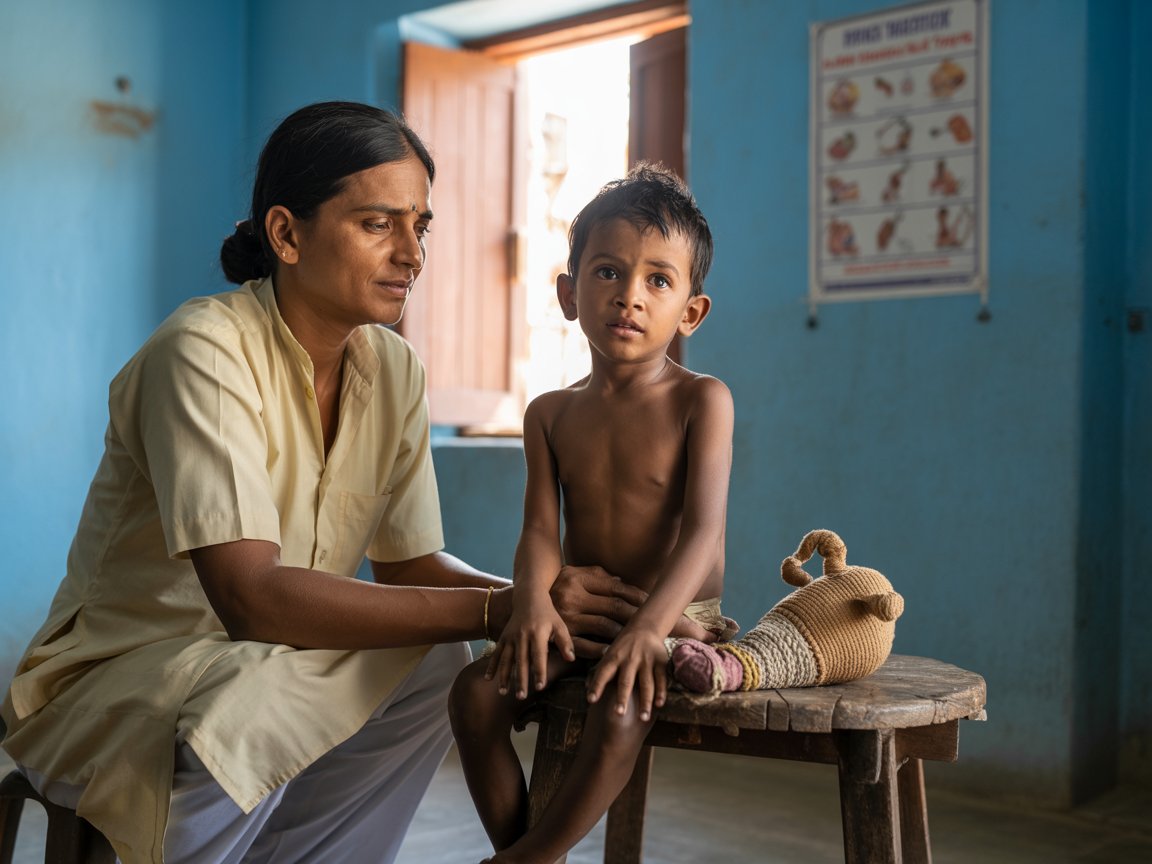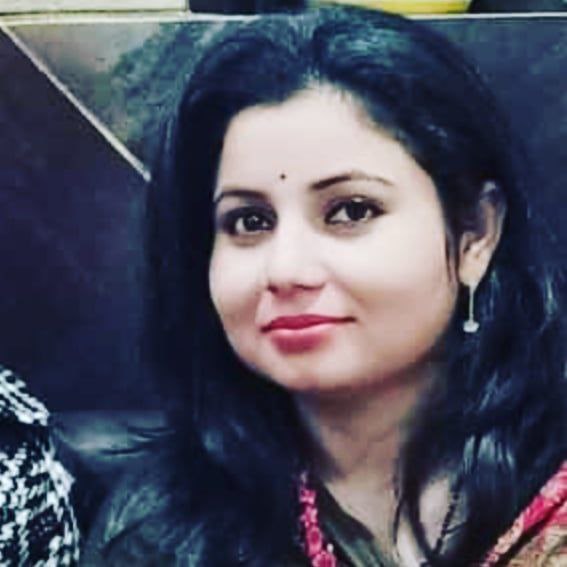The people spoke of a boy, my relative, who was born with a rare disorder. His limbs appeared different, his face had features like eyes wide-set and bulging, unfamiliar to the villagers. Long before I met him, I heard stories about a curse. They said his paternal uncle had suffered from a similar disease and died a few years back. The villagers whispered that it was punishment for how the boy’s mother had once treated him, with cruelty, they claimed. “This is the curse,” they murmured, shaking their heads. Every ailment, every oddity, they tied back to that long-past sin.
The stories grew darker with time. Women frightened their children by invoking his name: “Behave, or he will come for you.” And so, the boy became a shadow in the villagers’ minds, a symbol of fear.
When I finally saw him for the first time, I admit, I felt the same fear. As I spent more time observing him, I realised he was not a monster, not a curse. He was a small, innocent boy. His eyes were deep, searching, and strangely calm, as if he had learned more about life than any of us ever would. The villagers’ stares and whispers had built walls around him, walls he could not climb. My curiosity grew. What was this disease? Did the uncle also have the same disease?
The more I learned, the more the myths of curses faded. I read about genes, inheritance, and mutations. I understood that diseases do not come from curses; they come from tiny errors in our DNA, which may be passed silently from parent to child. The boy’s condition was not a punishment; it was science waiting to be understood.
I eventually found myself drawn into the very field that had once stirred my questions: medical genetics. I wanted to know the cause, the mechanism, and perhaps one day, a way to help children like him.
The boy still lives in the same village. People still whisper, but now, I whisper back with knowledge. One day, I hope to return not with fear, but with answers; maybe, with hope.
Only much later did I learn the name of the condition that probably shaped his life: Apert syndrome. Apert syndrome is a rare condition where a child is born with a misshapen head because the bones of the skull fuse too early. It also causes the fingers and toes to be joined together, a feature called syndactyly. Because the skull bones fuse early, the space for brain growth becomes restricted, which can lead to long-standing problems.
His clinical features suggested the diagnosis of Apert Syndrome, even though confirmation with gene sequencing is still pending.
The boy was unable to receive early reconstructive surgery due to an anaesthesia-related problem. Despite having no intellectual disability, he never had any formal schooling or acquired any professional skills. Due to his physical characteristics and educational handicap, he later experienced social disadvantage as an adult. He began street begging in childhood, perhaps not out of necessity alone, but because society gave him few alternatives.
Although Apert syndrome is usually sporadic, caused by new mutations in the FGFR2 gene, what puzzled me was the villagers’ claim that his paternal uncle had similar features before he passed away. That raised the question: was this truly a typical case of Apert syndrome, or is there something more at play?
To explore this mystery, I am currently analysing his gene sequencing data. I hope it will confirm the diagnosis and shed light on whether the uncle’s condition was related or merely coincidental. Perhaps science can finally explain what folklore once referred to as a curse.
Adults with Apert syndrome in developing nations experience emotional setbacks that exacerbate the physical handicap brought on by the condition. Sadly, structured genetic counselling, early diagnostic treatments, and thorough rehabilitation therapies are lacking in most regions of developing nations like India.
Join Our Google Group
Join our Google group and never miss an update from Gene Commons.



No responses yet